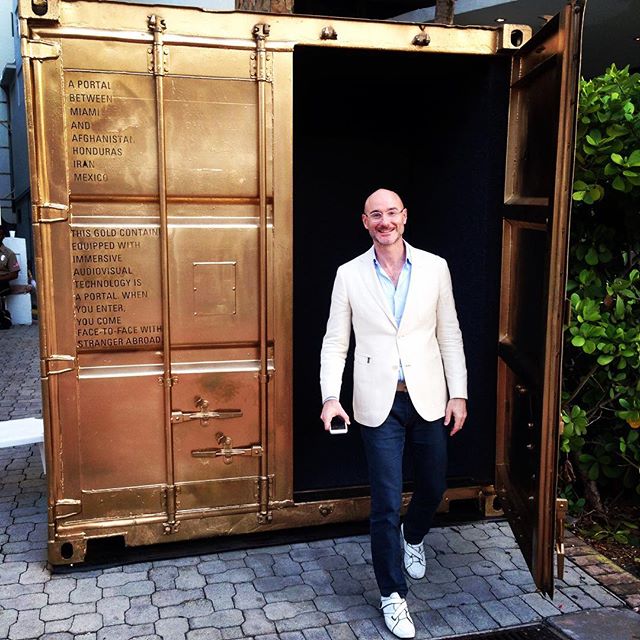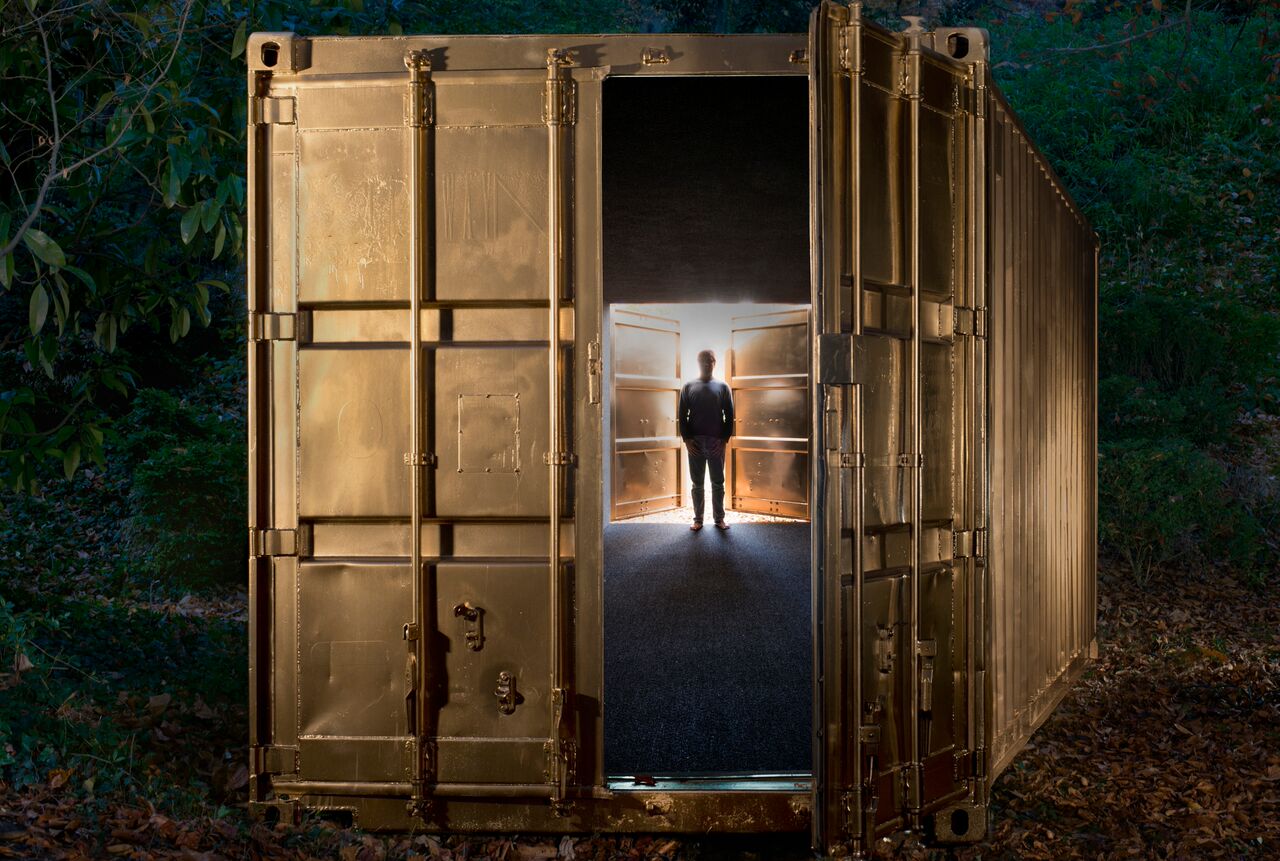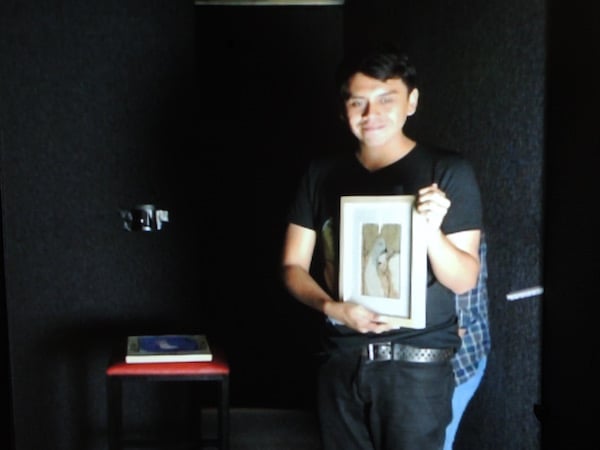Art & Exhibitions
An Artwork Links Miami to Afghanistan, Iran, and Mexico City
Have a conversation with a stranger a world away.

Have a conversation with a stranger a world away.

Sarah Cascone

Art Basel in Miami Beach brought the world to Miami, but there was only one artwork in the city that brought Miami to the world: Amar Bakshi‘s Portals exhibition, a golden shipping container that allows people from disparate locations across the globe to converse as if they are in the same room.
The Miami edition of Portals connected a shipping container located in front of the Sagamore Hotel to shipping containers in Tehran, Havana, Mexico City, and Herat, Afghanistan using a live video link. Bakshe conceived of the project, he told artnet News, as a “global civic space” that would allow people to get a sense of what daily life is like in disparate locations across the globe.
The project launched one year ago, linking New York and Tehran. “We expected it to be a neat experience,” Bakshi recalled, but he wasn’t prepared for the deeply emotional response from participants. The very first pair of visitors spoke for an hour, while the second person to enter in New York, who was originally from Iraq, came out sobbing after just a few moments.
Part of the appeal, Bakshi suspects, is that while it is easier than ever to communicate, our increasing reliance on technology makes it all too easy for us to avoid human interaction. When, for example, was the last time you struck up a conversation with the person next to you on the bus, rather than catching up on your e-mail?

Amar Bakshi, “Portals Exhibition.”
Photo: Amar Bakshi.
“This idea came to me because I missed having random encounters with strangers,” said Bakshi.
Since the project began, Bakshi has been approached from people around the world looking to host a shipping container of their own. The United Nations, for instance, arranged for a Portal in a Syrian refugee camp, in an effort to put a personal face on the issue of migrants.
Depending on the time of day, the Miami installation was connected to different cities around the world. At night, Bakshi sometimes had a line of visitors waiting for their turn, while earlier in the afternoon he sometimes had to approach passersby to find someone to pair with a person from another city linked up via the portal. After this reporter’s session, artnet News editor and chief Benjamin Genocchio happened to pass by, popping into Portals for a mini-session of his own.
Although Portals was only in town for Art Basel, Bakshi is looking to find the piece a long-term home in the city. With Portals currently expanding at a rate of about one every two weeks, Bakshi currently has his eye on Lesbos, the most common point of entry of Middle Eastern migrants coming to Europe.
Other potential future locations include a series of Portals placed at the site of the world’s major religious sites, such as Jerusalem, Mecca, and Notre Dame. Bakshi envisions a space where pilgrims from all faiths can come together as part of a positive dialogue.

An artist in Mexico City shows his work to artnet News via the Portals project by Amar Bakshi.
Photo: Sarah Cascone.
Having been through the portal ourselves, artnet News understands the appeal. Unlike video services like ChatRoulette, which allow users to quickly chat with a succession of other people around the world, Portals is about real conversation. You only get one conversation partner, and to end your chat you must physically leave the shipping container. Severing your link to the other side of the world is not as easy as a click of a mouse, and if your attention span fails, you can’t just change the channel, so to speak.
Inside Portals, the back wall is a video screen, revealing a mirror image of the dark, wall-to-wall and floor-to-ceiling carpeted room that you are in. You are introduced to your counterpoint and a helpful translator, and are then left alone, to discuss whatever you wish.
For 20 minutes, I talked to a young artist and illustrator in Mexico City, who, to my surprise, appeared with several of his works that he wanted me to see. He asked me about the art scene in the US and he discussed the strength of the network of young artists in Mexico City.
While the conversation wasn’t incredibly out of the ordinary, per se, in terms of what we talked about, what was significant about it was that we were taking the time to have the conversation at all. In that I felt the project’s vitality and purpose. Portals really does facilitate a seemingly-dying form of face to face communication in a time when it’s more scarce.
The shipping container is an apt vessel for Portal: they are standardized, secure, and easy to place in public places. It’s also highly symbolic of globalization, its primary purpose of transporting goods making it the perfect vessel for bringing people in far off lands together. Fittingly, each shipping container is also printed with numerical codes referring to the ports of call it has passed through, offering a history of its travels across the globe.
“It has a legacy to it,” said Bakshi, “which is really cool.”